The Study for Longitudinal Deformation of Adjacent Shield Tunnel Due to Foundation Pit Excavation with Consideration of the Retaining Structure Deformation
Abstract
1. Introduction
2. Study on the Sidewall Unloading of the Foundation Pit
2.1. The Deficiency of the Existing Foundation Pit Unloading Model
2.2. An Unloading Model Considering the Deformation of Retaining Structure
3. Additional Stress Distribution Caused by the Excavation of the Foundation Pit
3.1. Numerical Model and the Area Division of the Unloading Impact
3.2. Calculation of Additional Stress Caused by Sidewall Unloading of the Foundation Pit
4. Longitudinal Deformation of the Shield Tunnel by the Side of the Foundation Pit
4.1. Collaborative Deformation Mode of the Shield Tunnel with Rotation and Dislocation
4.2. The Total Potential Energy of the Shield Tunnel during Deformation
- (1)
- Work done by the horizontal additional load caused by the excavation of the foundation pit:where Pax(l) is the horizontal additional load caused by foundation pit excavation along the axis of the adjacent shield tunnel, which can be obtained with Equation (11), and N is the number of shield tunnel segment rings within the calculation range. The value taken in this paper’s calculation should be related to the range affected by the excavation of the foundation pit by the side of the shield tunnel. Theoretically, the greater the value of N is, the higher the calculation accuracy will be. However, the corresponding calculation amount will also increase, and the calculation efficiency will be affected. In order to ensure the accuracy of the calculation, the length of the tunnel included in the calculation range should not be less than the scope of the tunnel affected by the foundation pit. According to previous research [25], many factors influence the length of the impact region, and the excavation size of the foundation pit parallel to tunnel (L) is the main factor, and the impact region is about 2~3 times the size of L. Therefore, in the initial calculation, the value of N should not be less than 1.5 L/Dt, where Dt is the width of the segment ring. According to the method proposed in previous studies [34], if it is found that the influence range is large, the value of N should be increased appropriately until the calculated value tends to be stable.
- (2)
- Work done by overcoming the soil layer resistance:
- (3)
- Work done by overcoming the shear forces between the rings:
- (4)
- Work done by overcoming the tension caused by rotation between the rings:where r is the integral variable, which represents the distance from the calculated point at the segment joint to the bottom of the tunnel. The rotation angle between the segment rings can be obtained through .
4.3. Fourier Expansion of the Curve Function of the Shield Tunnel’s Horizontal Displacement
4.4. Solve the Variational Control Equation
5. Engineering Case Analysis
5.1. Case History 1
5.2. Case History 2
6. Analyzing the Influence Factors of the Adjacent Tunnel’s Longitudinal Deformation
6.1. Deformation Control Parameters of the Foundation Pit Retaining Structure vmax/He
6.2. The Clearance s between the Foundation Pit and the Tunnel
6.3. The Buried Depth h of the Tunnel
7. Conclusions
- (1)
- The calculated results of the method in this paper are in good agreement with the measured values, and the horizontal displacement of the shield tunnel axis by the side of the foundation pit presents a normal distribution. The longitudinal deformation of the adjacent tunnel is mainly caused by the unloading effect of the foundation pit sidewall, which is parallel and close to the tunnel. When the excavation depth is in the soil layer near the buried depth of the adjacent tunnel, the longitudinal deformation of the shield tunnel by the side of the foundation pit will increase sharply. Thus, more attention should be paid to the control of the tunnel’s deformation in this working condition.
- (2)
- The horizontal displacement near the excavation center of the foundation pit is relatively large, but the values of the dislocation and rotation angle between the segment rings are relatively small. The maximum rotation angle between the segment rings, the maximum dislocation and the maximum shear force between the segment rings all appear in the vicinity of the two inflexion points of the horizontal displacement curve of the tunnel.
- (3)
- With the increase of the retaining structure’s deformation, the longitudinal deformation of the adjacent shield tunnel and its influence range also increase. The longitudinal deformation of the adjacent shield tunnel decreases with the increase of the clearance between the foundation pit and the tunnel. The foundation pit’s excavation has a great influence on the adjacent shield tunnel at a shallow burial depth. Moreover, the impacts on the tunnel caused by the excavation decrease with the increase of the burial depth of the adjacent tunnel.
Author Contributions
Funding
Acknowledgments
Conflicts of Interest
References
- Yan, J.Y.; Wang, R.L. Cause analysis and typical characteristics of settlement and transverse convergence deformation of metro tunnel in soft ground in Shanghai. J. Nat. Disasters 2018, 27, 178–187. (In Chinese) [Google Scholar]
- Wang, H. Influence of deep excavation on the adjacent existing shielded subway tunnels. Soil Eng. Found. 2019, 33, 19–22. [Google Scholar]
- Yang, Y.B.; Zhou, B.; Xie, X.Y. Study on transverse deformation and cracking property of shield-driven tunnel induced by adjacent excavation. Chin. J. Rock Mech. Eng. 2016, 35 (Suppl. 2), 4082–4093. (In Chinese) [Google Scholar]
- Zhou, Z.L.; Chen, S.G.; Tu, P.; Zhang, H.S. An analytic study on the deflection of subway tunnel due to adjacent excavation of foundation pit. J. Mod. Transport. 2015, 23, 287–297. [Google Scholar] [CrossRef]
- Zhang, Z.G.; Zhang, M.X.; Wang, W.D. Two-stage method for analyzing effects on adjacent metro tunnels due to foundation pit excavation. Rock Soil Mech. 2011, 32, 2085–2092. (In Chinese) [Google Scholar]
- Zheng, G.; Du, Y.M.; Cheng, X.S.; Diao, Y.; Deng, X.; Wang, F.J. Characteristics and prediction methods for tunnel deformations induced by excavations. Geomech. Eng. 2017, 12, 361–397. [Google Scholar] [CrossRef]
- Shi, J.W.; Ng, C.W.W.; Chen, Y.H. Three-dimensional numerical parametric study of the influence of basement excavation on existing tunnel. Comput. Geotech. 2015, 63, 146–158. [Google Scholar] [CrossRef]
- Ng, C.W.W.; Shi, J.W.; Mašín, D.; Sun, H.S.; Lei, G.H. Influence of sand density and retaining wall stiffness on the three-dimensional responses of a tunnel to basement excavation. Can. Geotech. J. 2015, 52, 1811–1829. [Google Scholar] [CrossRef]
- Wang, L.F.; Pang, J.; Xu, Y.F.; Yang, K.F. Influence of foundation pit excavation on adjacent metro tunnels. Rock Soil Mech. 2016, 37, 2004–2010. (In Chinese) [Google Scholar]
- Simpson, B.; Vardanega, P.J. Results of monitoring at the British Library excavation. Proc. ICE-Geotech. Eng. 2014, 167, 99–116. [Google Scholar] [CrossRef]
- Chen, R.; Meng, F.; Li, Z.; Ye, Y.; Ye, J. Investigation of response of metro tunnels due to adjacent large excavation and protective measures in soft soils. Tunn. Undergr. Space Technol. 2016, 58, 224–235. [Google Scholar] [CrossRef]
- Meng, F.Y.; Chen, R.P.; Kang, X. Effects of tunneling-induced soil disturbance on post-construction settlement in structured soft soils. Tunn. Undergr. Space Technol. 2018, 80, 53–63. [Google Scholar] [CrossRef]
- Devriendt, M.; Doughty, L.; Morrison, P.; Pillai, A. Displacement of tunnels from a basement excavation in London. Geotech Eng. 2010, 163, 131–145. [Google Scholar] [CrossRef]
- Kitiyodom, P.; Matsumoto, T.; Kawaguchi, K. A simplified analysis method for piled raft foundations subjected to ground movements induced by tunneling. Int. J. Numer. Anal. Meth. Geomech. 2005, 29, 1485–1507. [Google Scholar] [CrossRef]
- Huang, M.S.; Zhang, C.R.; Li, Z. A simplified analysis method for the influence of tunneling on grouped piles. Tunn. Undergr. Space Technol. 2009, 24, 410–422. [Google Scholar] [CrossRef]
- Zhang, Z.G.; Zhang, M.X.; Zhao, Q.H. A simplified analysis for deformation behavior of buried pipelines considering disturbance effects of underground excavation in soft clays. Arab. J. Geosci. 2015, 8, 7771–7785. [Google Scholar] [CrossRef]
- Liang, R.Z.; Xia, T.D.; Huang, M.S.; Lin, C.G. Simplified method for evaluating the effects of adjacent excavation on shield tunnel considering the shearing effect. Comput. Geotech. 2017, 81, 167–187. [Google Scholar] [CrossRef]
- Liang, R.Z.; Wu, W.B.; Yu, F.; Jiang, G.S.; Liu, J.W. Simplified method for evaluating shield tunnel deformation due to adjacent excavation. Tunn. Undergr. Space Technol. 2018, 71, 94–105. [Google Scholar] [CrossRef]
- Zhang, Z.G.; Huang, M.S.; Wang, W.D. Evaluation of deformation response for adjacent tunnels due to soil unloading in excavation engineering. Tunn. Undergr. Space Technol. 2013, 38, 244–253. [Google Scholar] [CrossRef]
- Zhang, J.F.; Chen, J.J.; Wang, J.H.; Zhu, Y.F. Prediction of tunnel displacement induced by adjacent excavation in soft soil. Tunn. Undergr. Space Technol. 2013, 36, 24–33. [Google Scholar] [CrossRef]
- Wang, T.; Li, H.; Xu, R.Q. Analysis of deformation of shield tunnel when vertical loading and unloading. Mod. Transp. Technol. 2008, 15, 29–31, 57. (In Chinese) [Google Scholar]
- Zhou, S.H.; He, C.; Xiao, J.H. Energy method for calculating deformation of adjacent shield tunnels due to foundation pit excavation considering step between rings. China Railw. Sci. 2016, 37, 53–60. (In Chinese) [Google Scholar]
- Wei, G.; Hong, W.Q.; Wei, X.J.; Zhang, X.H.; Luo, J.W. Calculation of rigid body rotation and shearing dislocation deformation of adjacent shield tunnels due to excavation of foundation pits. Chin. J. Geotech. Eng. 2019, 41, 1251–1259. (In Chinese) [Google Scholar]
- Jiang, Z.H.; Zhang, Y.X. Calculation of influence on longitudinal deformation of adjacent tunnels due to excavation. J. Civil Archit. Environ. Eng. 2013, 35, 7–11. (In Chinese) [Google Scholar]
- Wei, G.; Zhao, C.L. Calculation method of additional load of adjacent metro tunnels due to foundation pit excavation. Chin. J. Rock Mech. Eng. 2016, 35 (Suppl. 1), 3408–3417. (In Chinese) [Google Scholar]
- Ding, Z.; Wang, D.; Wang, J.Y.; Wei, X.J. Deformation characteristics of Zhejiang soft soil deep foundation pits and their predictive analysis. Rock Soil Mech. 2015, 36 (Suppl. 1), 506–512. (In Chinese) [Google Scholar]
- Liu, M.L.; Fang, Q.; Zhang, D.L.; Hou, Y.J. Prediction of transient deformation due to excavation based on improved MSD method. Chin. J. Rock Mech. Eng. 2018, 37, 1700–1707. (In Chinese) [Google Scholar]
- Ou, C.Y.; Chiou, D.C.; Wu, T.S. Three-Dimensional finite element analysis of deep excavations. J. Geotech. Eng. 1996, 122, 337–345. [Google Scholar] [CrossRef]
- Liu, N.W.; Gong, X.N.; Yu, F.; Fang, K. Analysis of spatial effects in strutted excavation and related influential factors. Rock Soil Mech. 2014, 35, 2293–2298. (In Chinese) [Google Scholar]
- Finno, R.J.; Blackburn, J.T.; Roboski, J.F. Three-Dimensional effects for supported excavations in clay. J. Geotech. Geoenviron. Eng. 2007, 133, 30–36. [Google Scholar] [CrossRef]
- Xu, R.Q. Methods of earth pressure calculation for excavation. J. Zhejiang Univ. (Eng. Sci.) 2000, 34, 370–375. (In Chinese) [Google Scholar]
- Ko, C.T.; Chen, Y.B.; Gao, H.B.; Cao, X. Calculation model and application of non-limit earth pressure considering displacement of retaining structure. Water Resour. Power. 2013, 31, 127–131. (In Chinese) [Google Scholar]
- Mindlin, R.D. Force at a point in the interior of a semi-infinite solid. Physics 1936, 7, 195–201. [Google Scholar] [CrossRef]
- Wei, G.; Zhang, X.H. Calculation of rotation and shearing dislocation deformation of underlying shield tunnels due to foundation pit excavation. J. Cent. South. Univ. (Sci. Technol.) 2019, 50, 2273–2284. (In Chinese) [Google Scholar]
- Guo, L.; Yang, X.A.; Qiu, Y. Longitudinal heterogeneous equivalent continuous model for stagger joint segmental lining. Urban. Mass Transit. 2017, 20, 17–22. (In Chinese) [Google Scholar]
- Vesic, B.A. Bending of beams resting on isotropic elastic solids. J. Eng. Mech. 1961, 87, 35–53. [Google Scholar]
- Ye, F.; He, C.; Zhu, H.H.; Sun, H.D. Longitudinal equivalent rigidity analysis of shield tunnel considering transverse characteristics. Chin. J. Geotech. Eng. 2011, 33, 1870–1876. (In Chinese) [Google Scholar]
- Wei, G.; Li, J.; Xuan, H.L.; Dong, L.Z.; Xu, Y.Y.; Zhang, S.M. Monitoring data analysis on the influence of large deep foundation pit excavation on nearby metro shield tunnel. J. Railw. Sci. Eng. 2018, 15, 718–726. (In Chinese) [Google Scholar]
- Shao, H.; Wang, R. Monitoring Data Analysis on Influence of Operating Metro Tunnel by Nearly Excavation Construction. Chin. J. Undergr. Space Eng. 2011, 7 (Suppl. 1), 1403–1408. (In Chinese) [Google Scholar]
- Liao, S.M.; Wei, S.F.; Tan, Y.; Liu, J.X. Field performance of large-scale deep excavations in Suzhou. Chin. J. Geotech. Eng. 2015, 37, 458–469. (In Chinese) [Google Scholar]
- Wang, Z.Y. Research on Deformation Behavior of Deep Excavation with Bracing Diaphragm Wail in Hangzhou Area; Zhejiang University: Hangzhou, China, 2017. (In Chinese) [Google Scholar]
- Xu, Z.H.; Wang, J.H.; Wang, W.D. Deformation behavior of diaphragm walls in deep excavations in Shanghai. China Civ. Eng. J. 2008, 41, 81–86. (In Chinese) [Google Scholar]
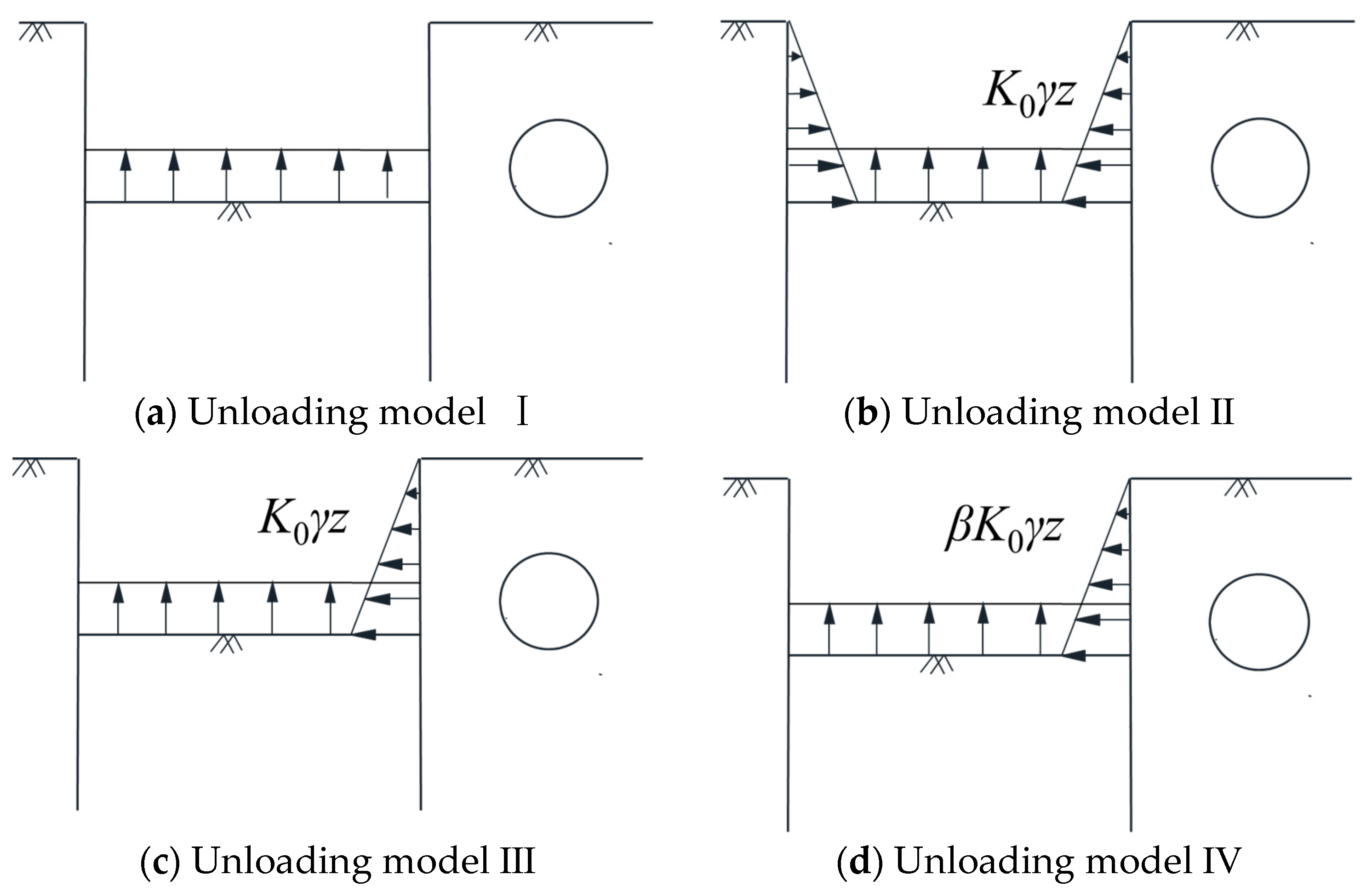

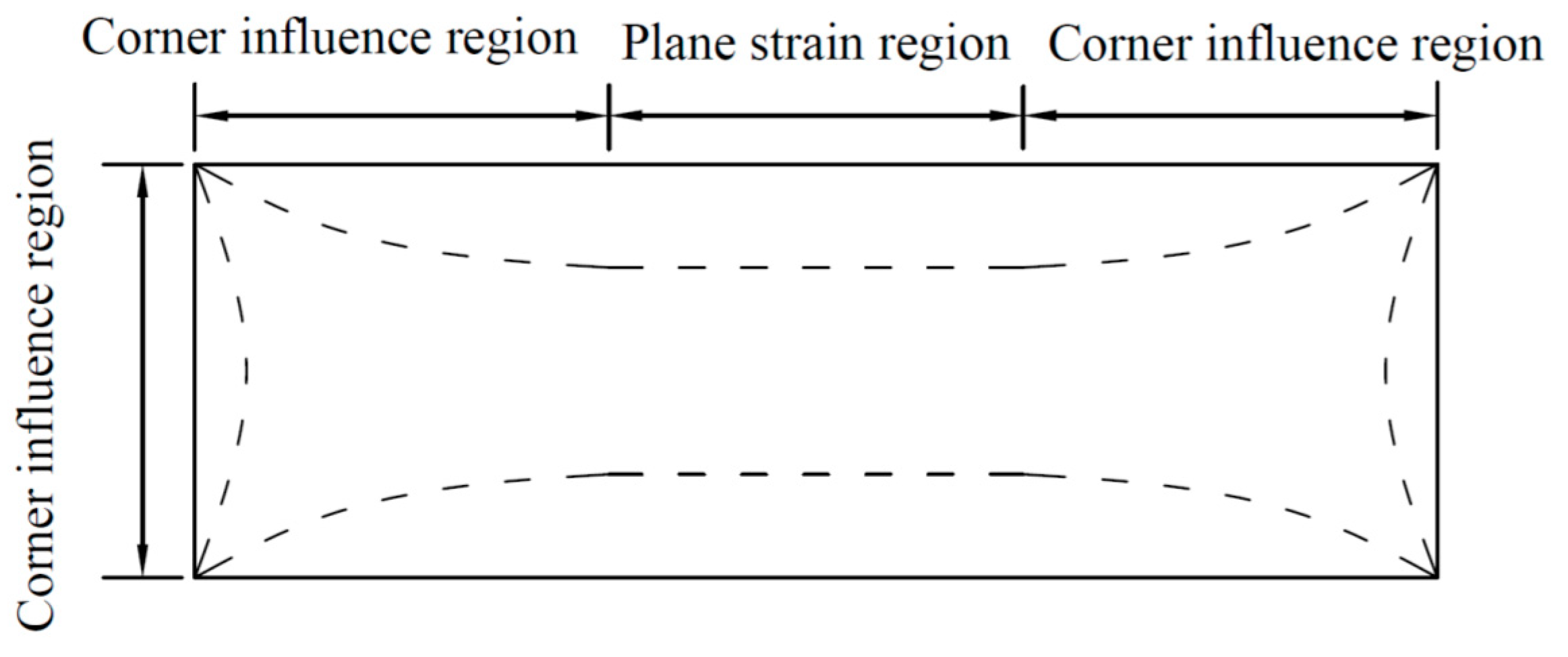

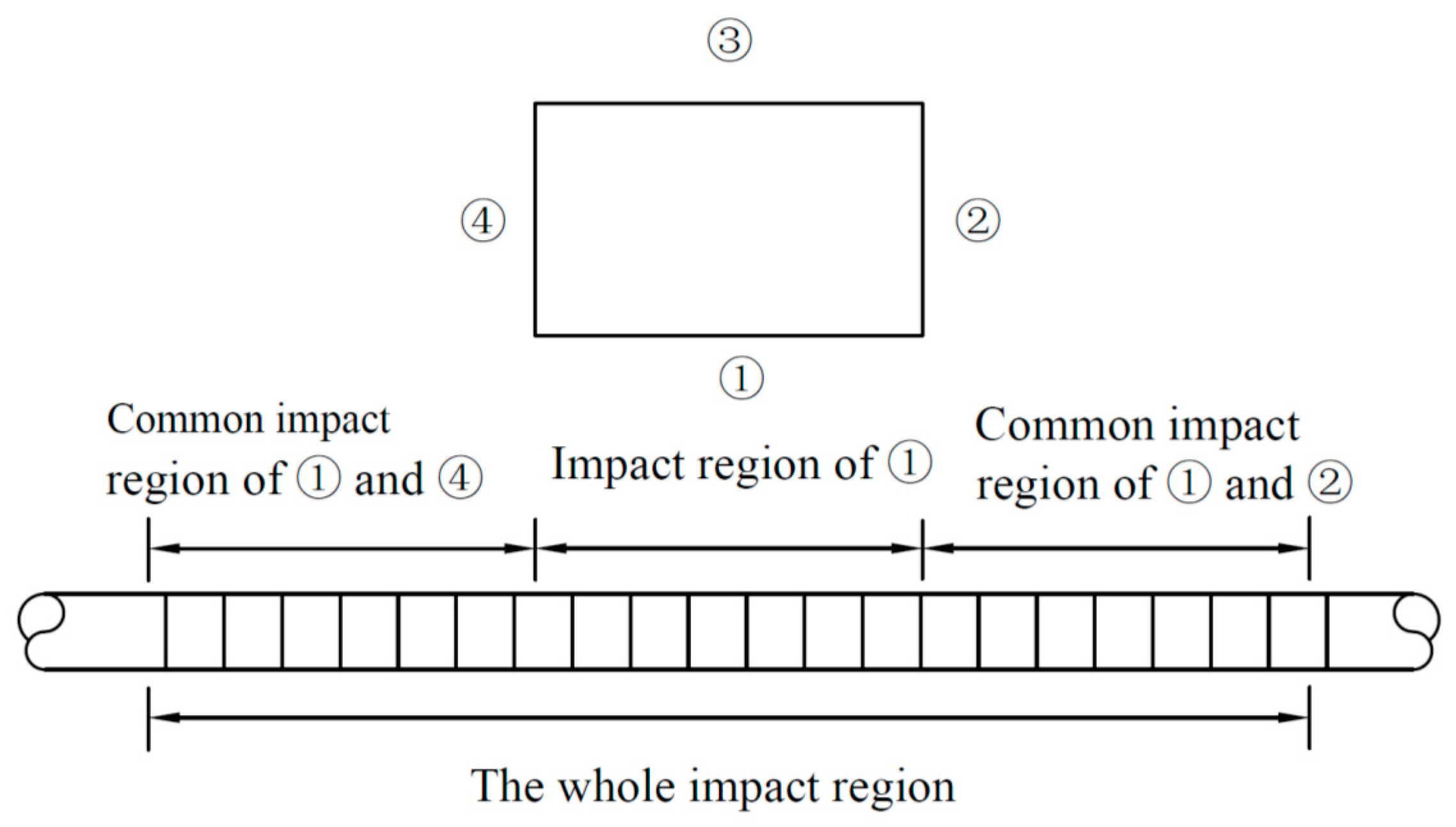
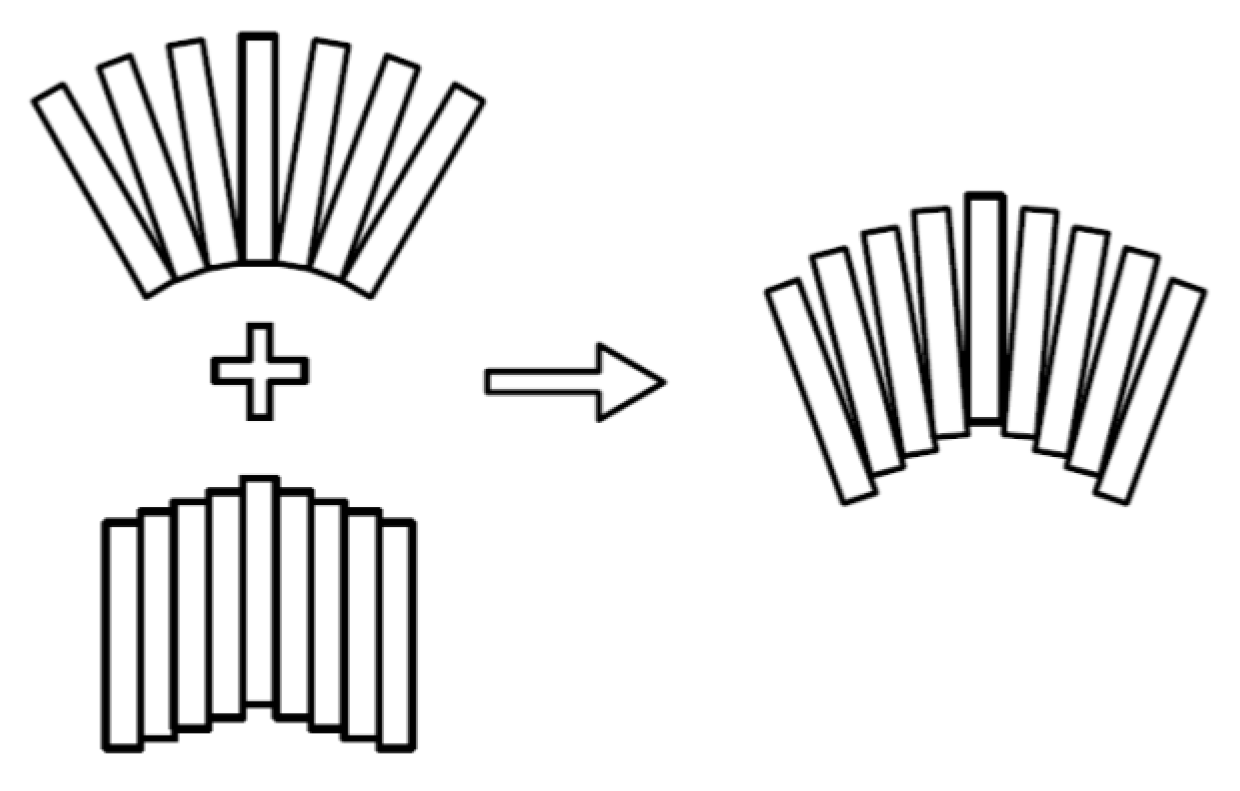
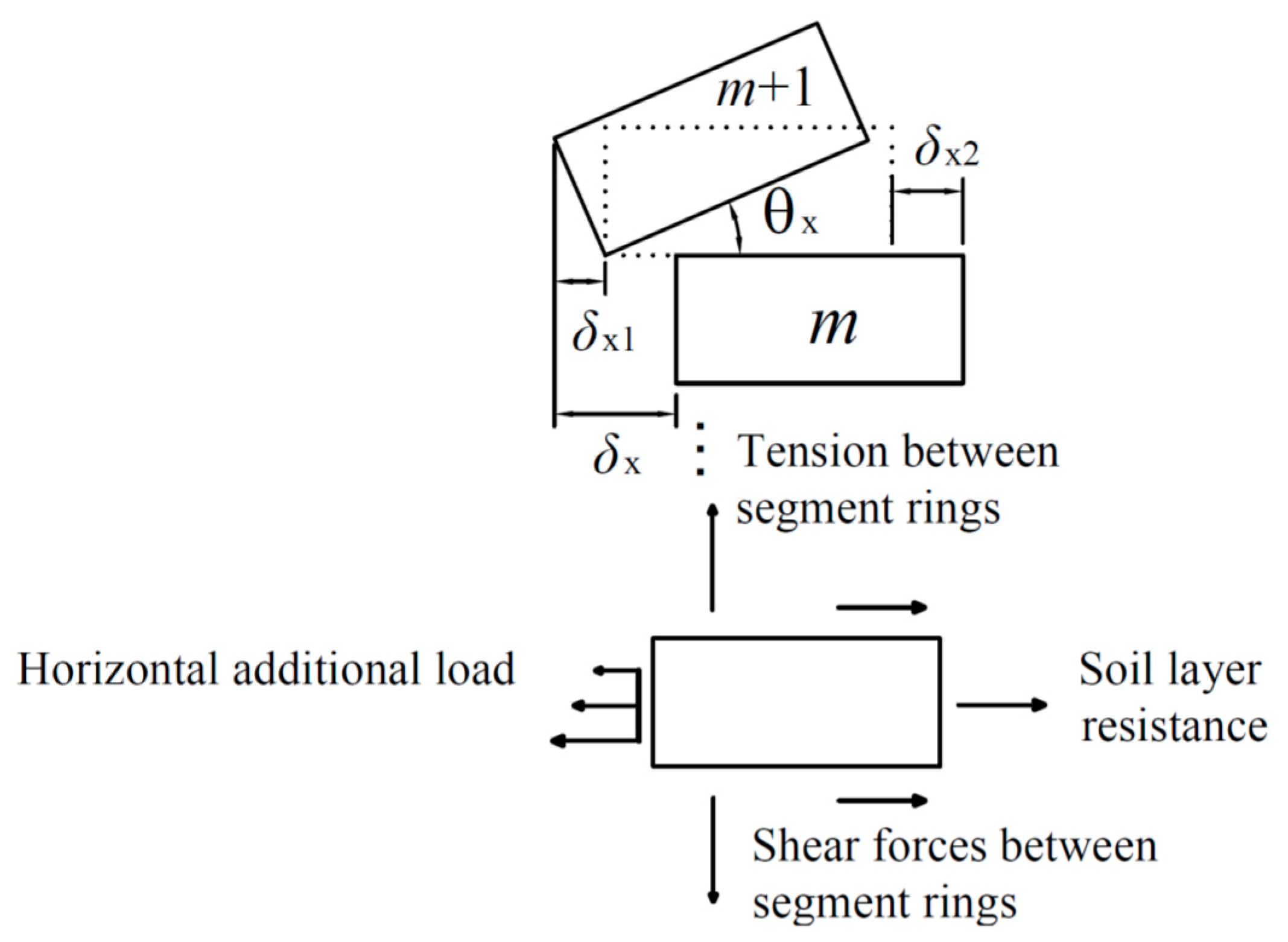
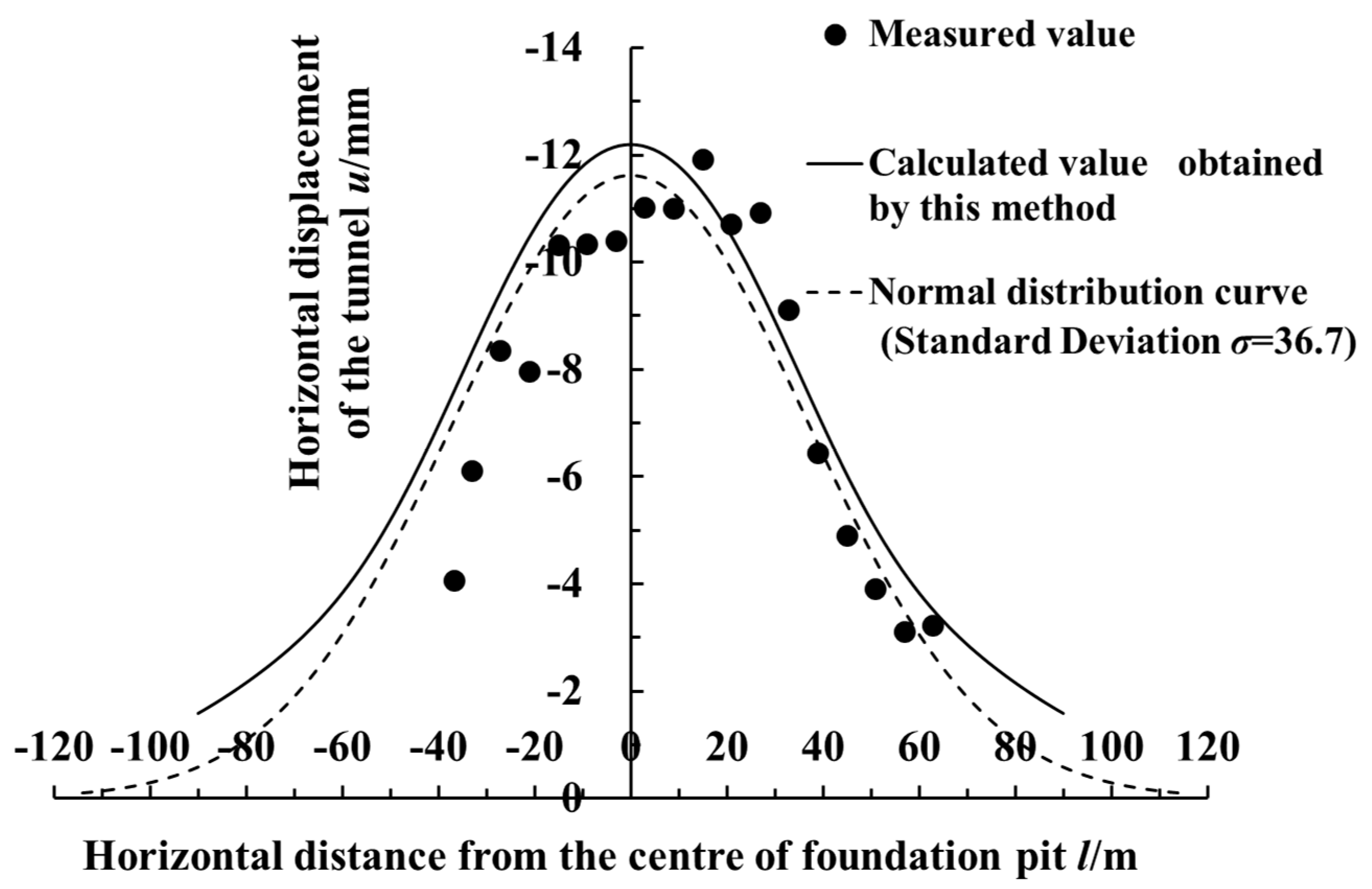

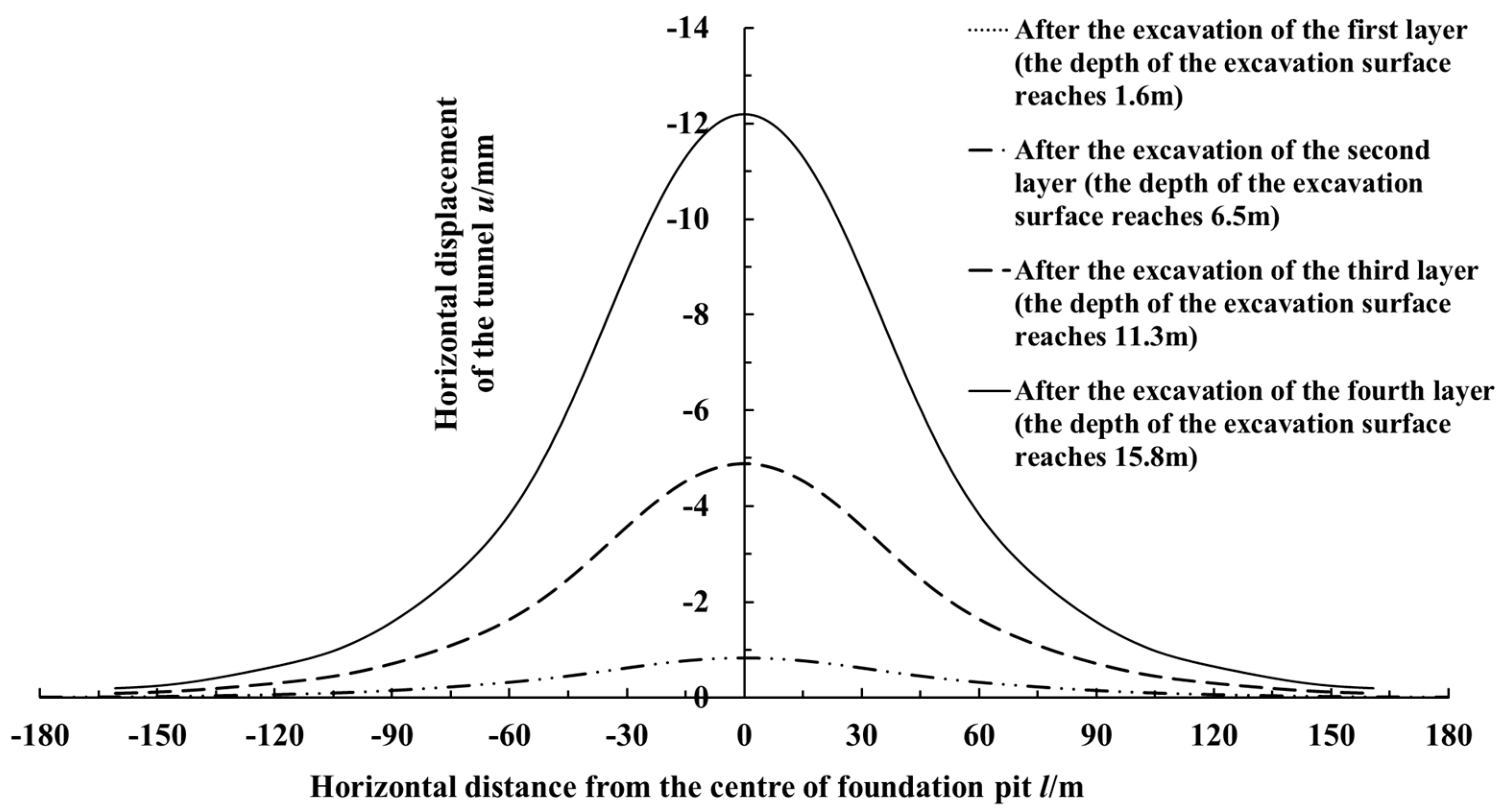
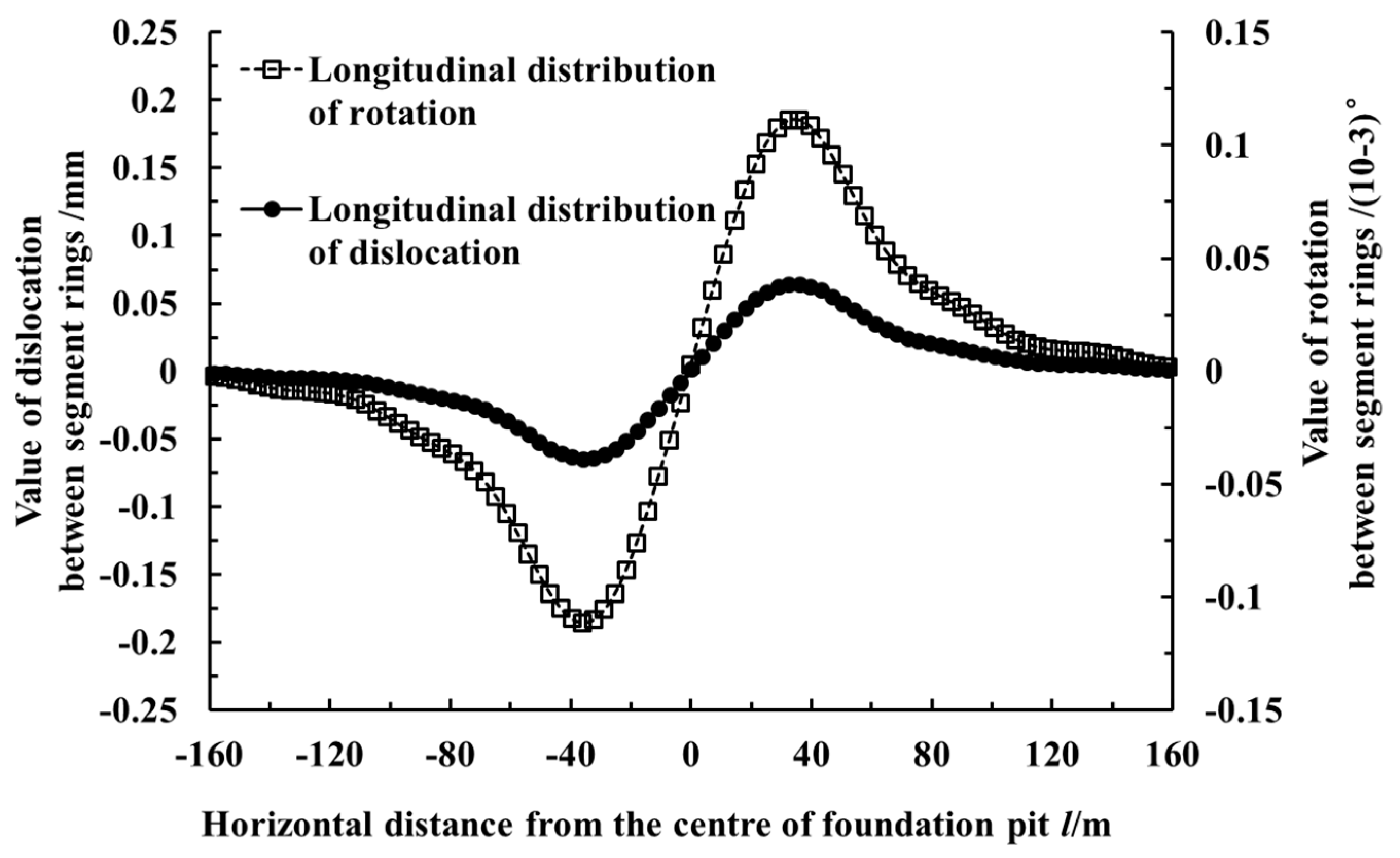
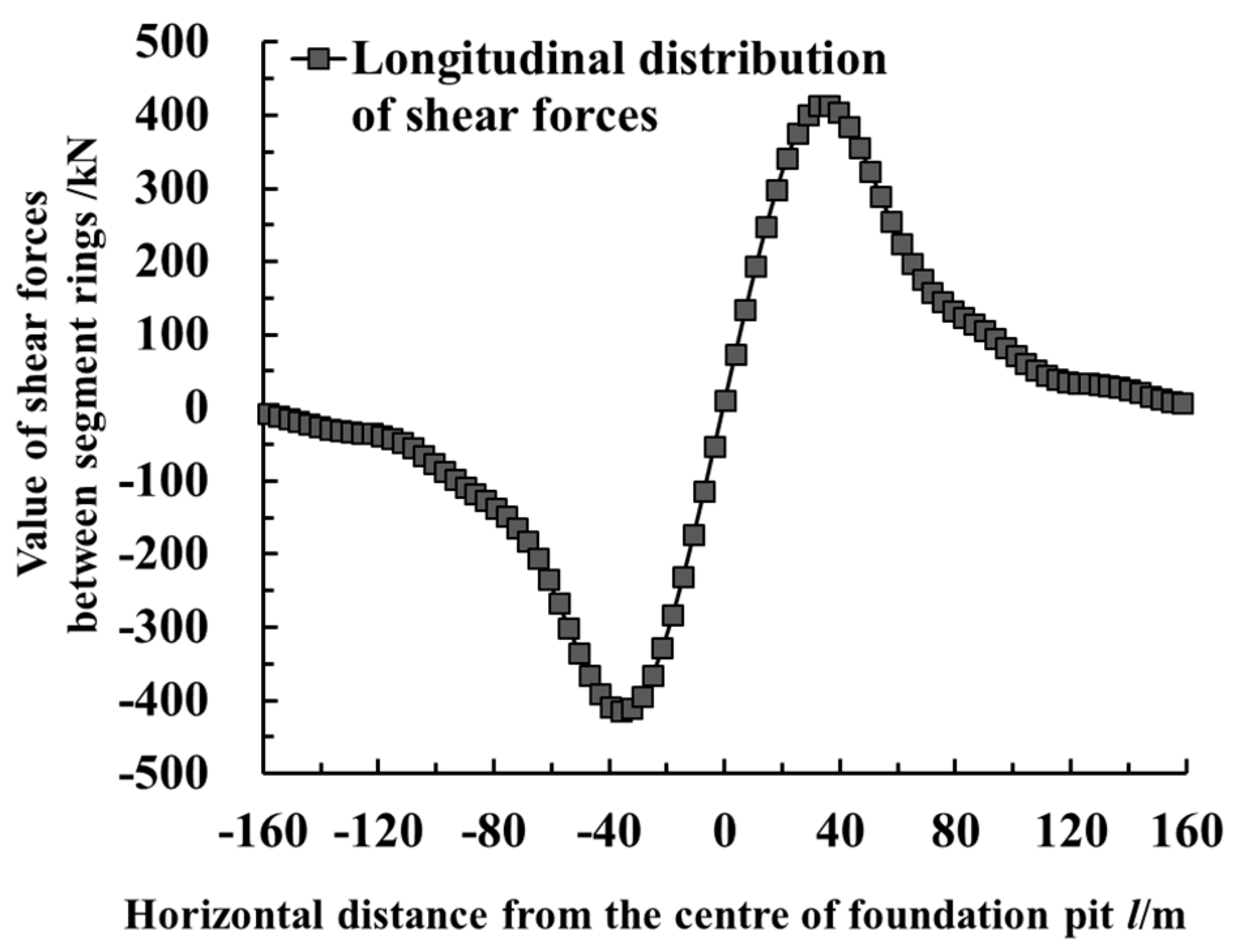


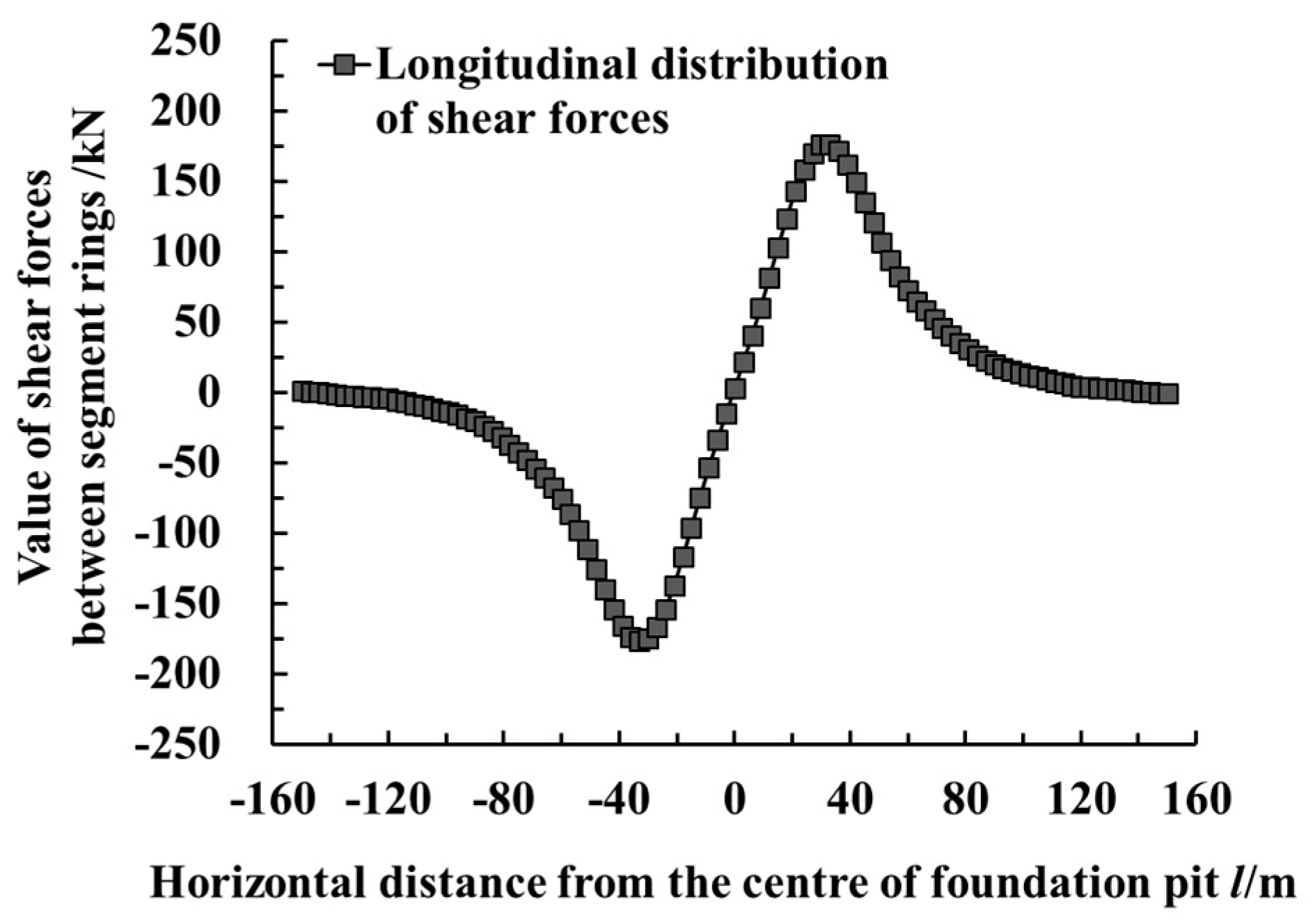

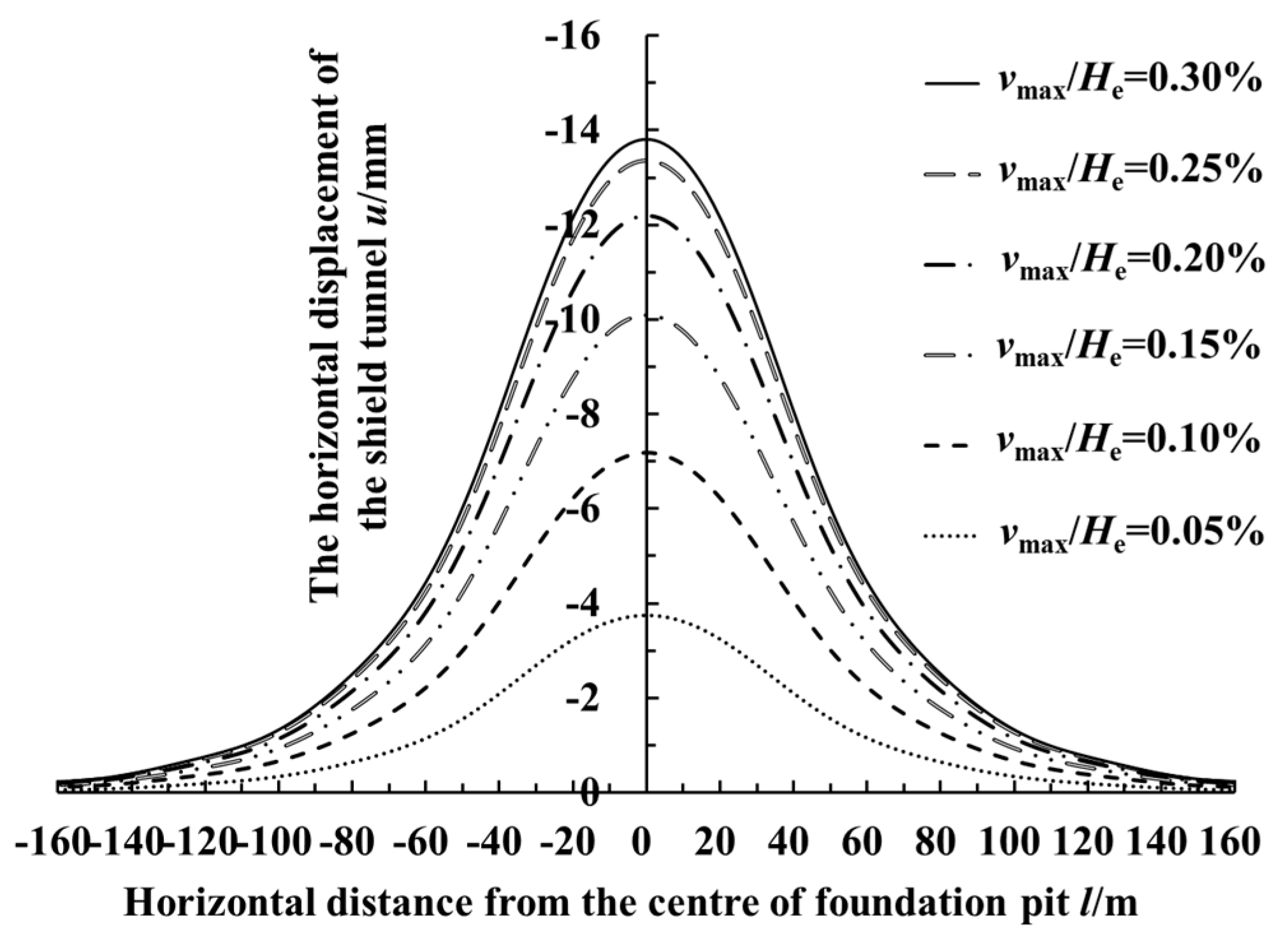
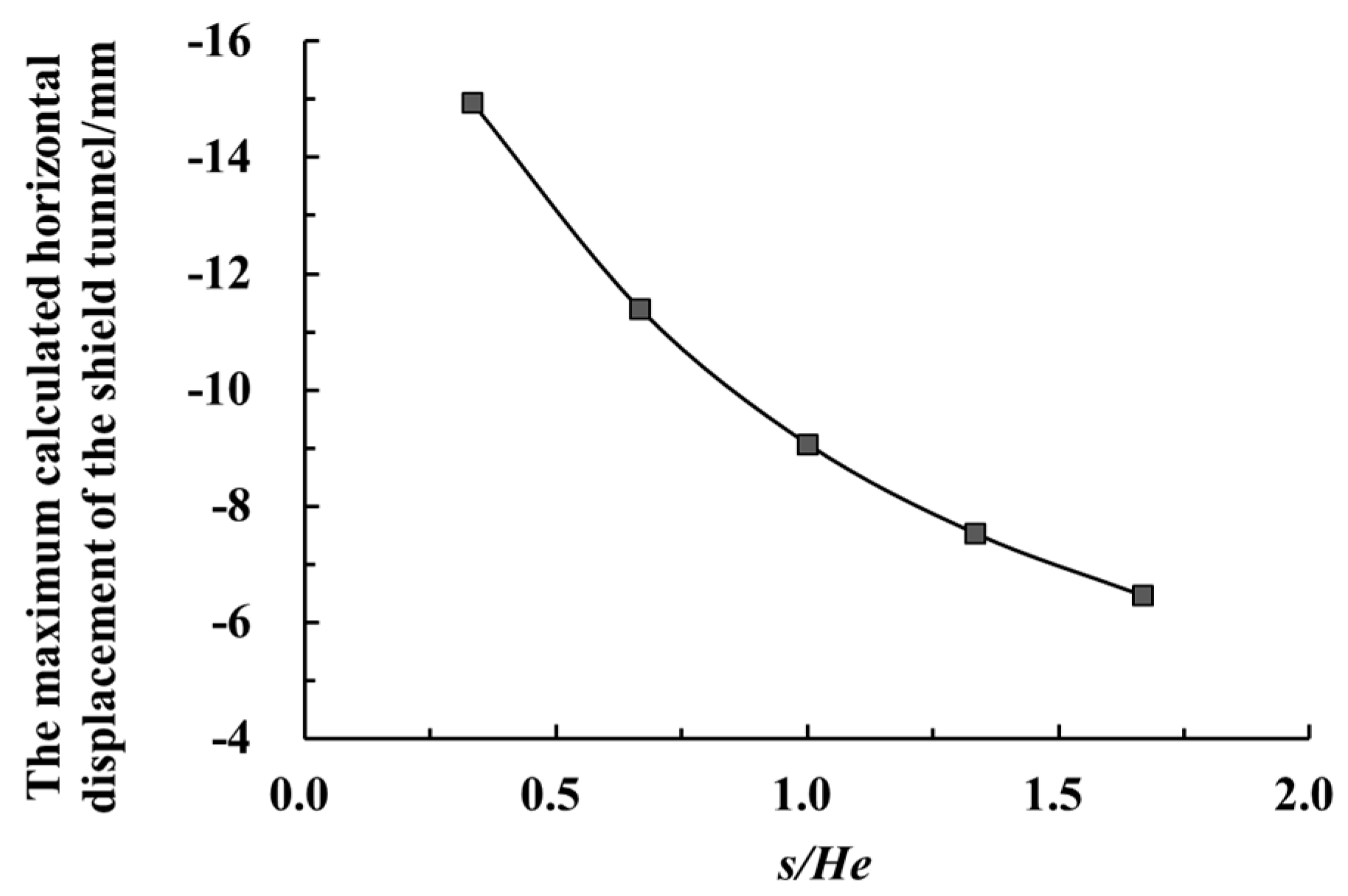
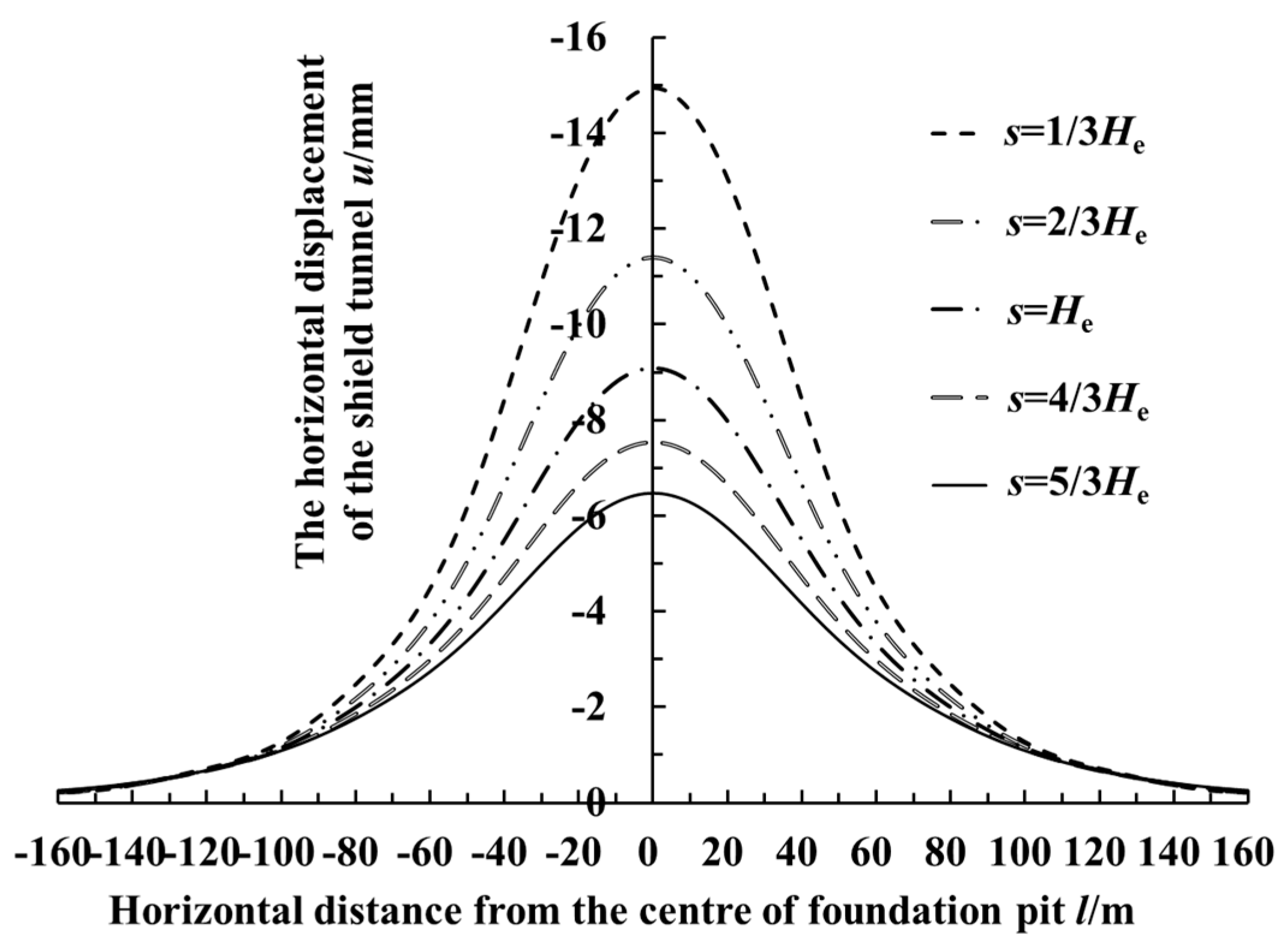
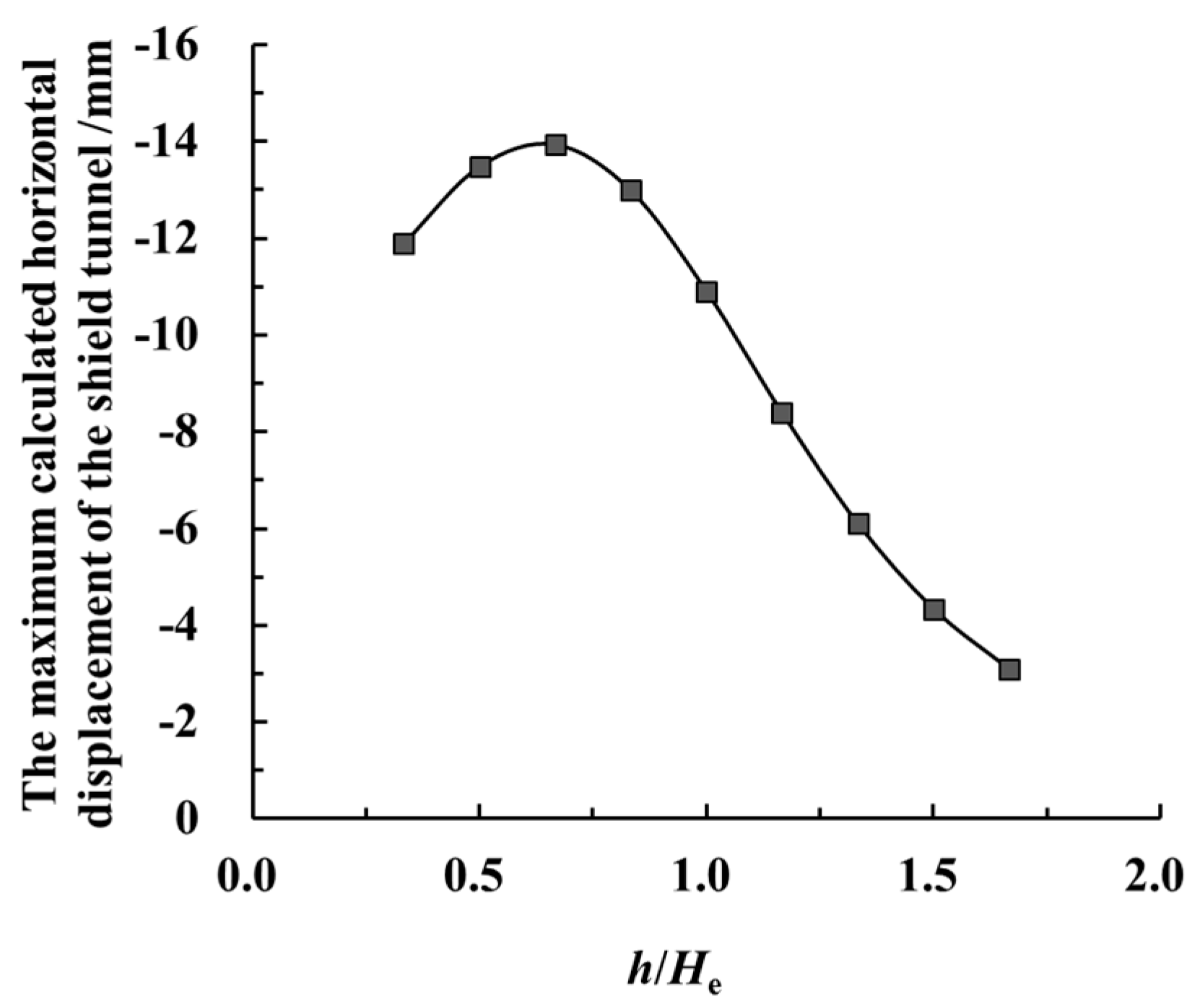
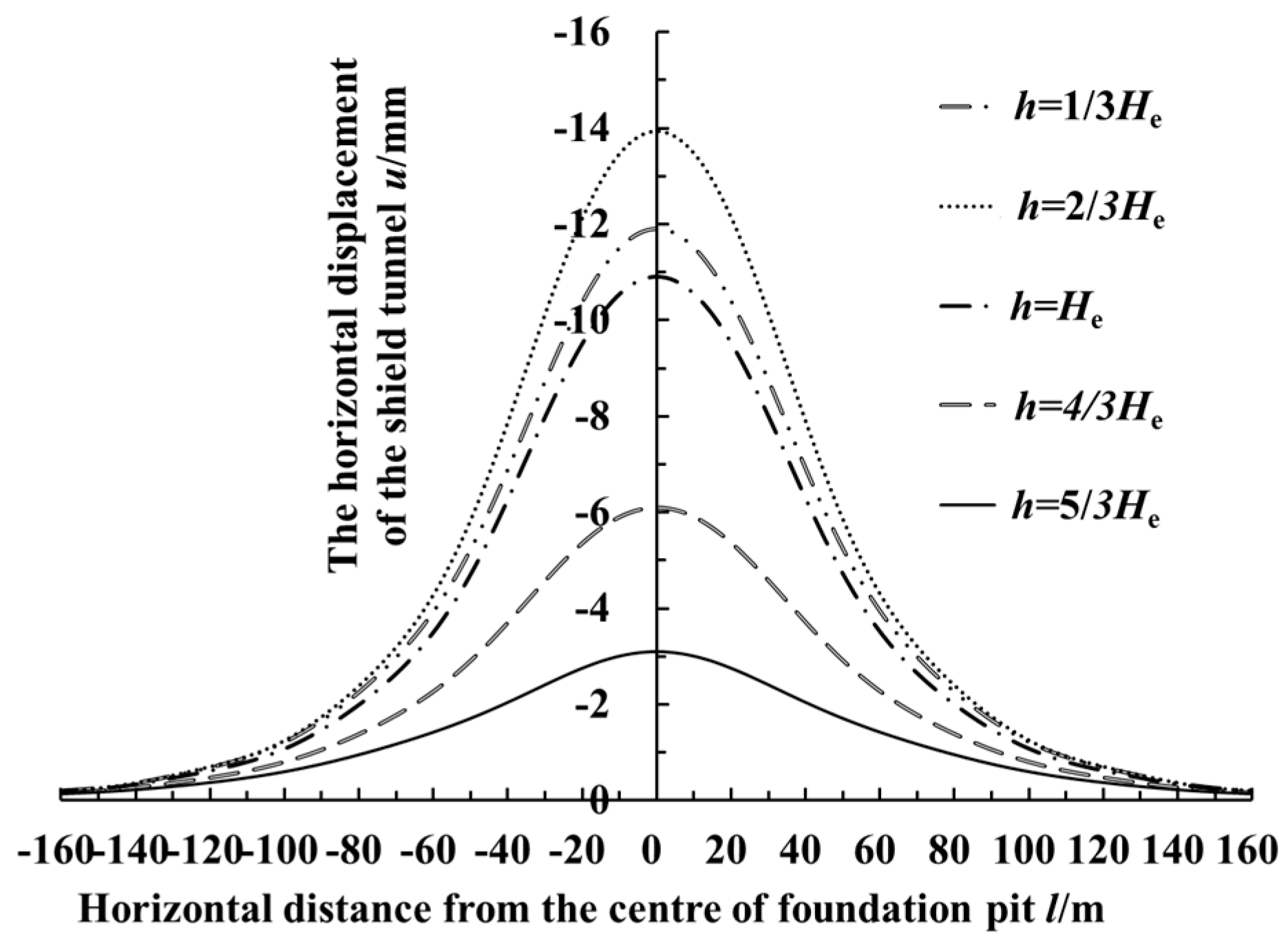
Publisher’s Note: MDPI stays neutral with regard to jurisdictional claims in published maps and institutional affiliations. |
© 2020 by the authors. Licensee MDPI, Basel, Switzerland. This article is an open access article distributed under the terms and conditions of the Creative Commons Attribution (CC BY) license (http://creativecommons.org/licenses/by/4.0/).
Share and Cite
Zhang, X.; Wei, G.; Jiang, C. The Study for Longitudinal Deformation of Adjacent Shield Tunnel Due to Foundation Pit Excavation with Consideration of the Retaining Structure Deformation. Symmetry 2020, 12, 2103. https://doi.org/10.3390/sym12122103
Zhang X, Wei G, Jiang C. The Study for Longitudinal Deformation of Adjacent Shield Tunnel Due to Foundation Pit Excavation with Consideration of the Retaining Structure Deformation. Symmetry. 2020; 12(12):2103. https://doi.org/10.3390/sym12122103
Chicago/Turabian StyleZhang, Xinhai, Gang Wei, and Chengwu Jiang. 2020. "The Study for Longitudinal Deformation of Adjacent Shield Tunnel Due to Foundation Pit Excavation with Consideration of the Retaining Structure Deformation" Symmetry 12, no. 12: 2103. https://doi.org/10.3390/sym12122103
APA StyleZhang, X., Wei, G., & Jiang, C. (2020). The Study for Longitudinal Deformation of Adjacent Shield Tunnel Due to Foundation Pit Excavation with Consideration of the Retaining Structure Deformation. Symmetry, 12(12), 2103. https://doi.org/10.3390/sym12122103




